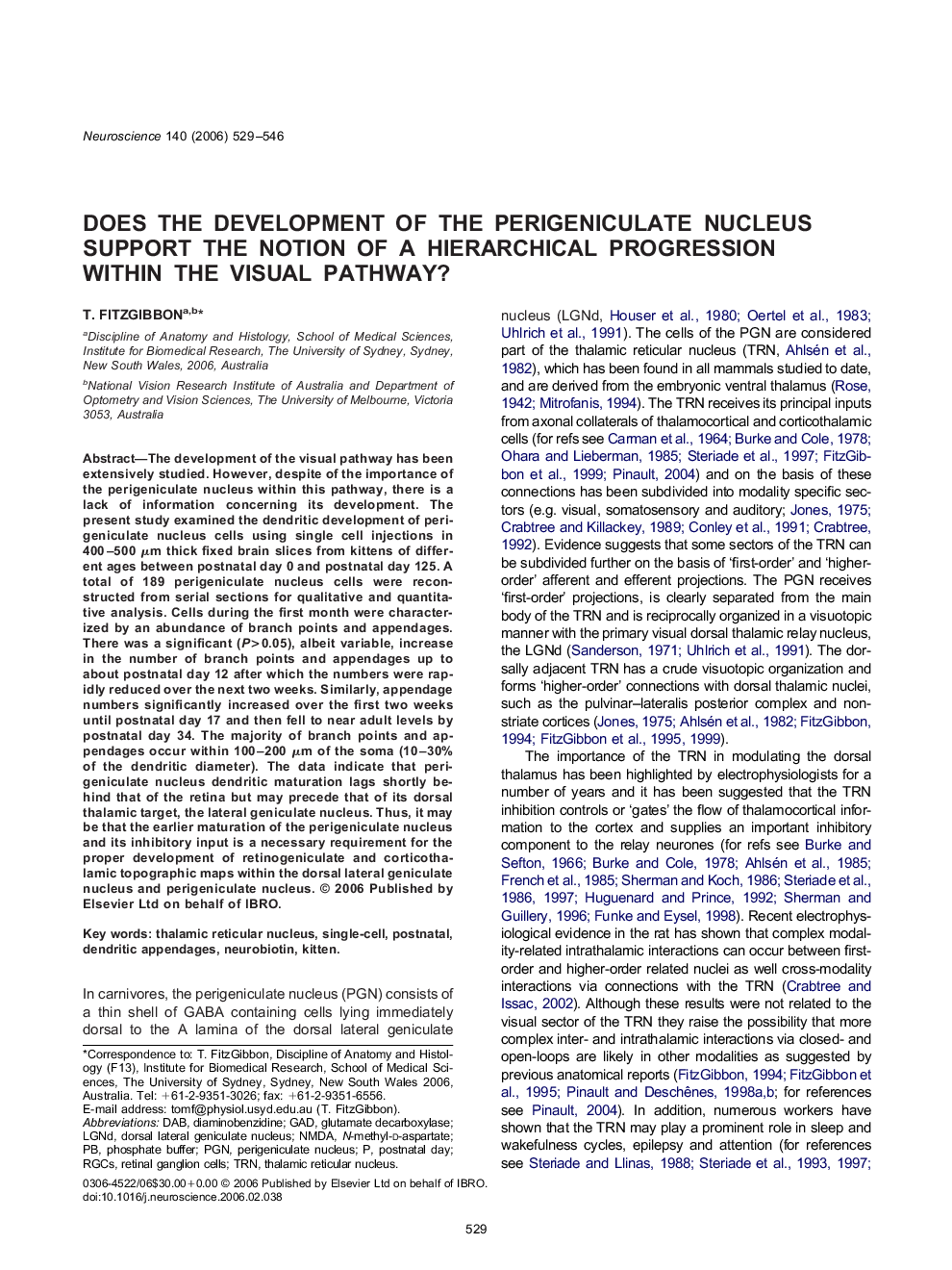| Article ID | Journal | Published Year | Pages | File Type |
|---|---|---|---|---|
| 6278792 | Neuroscience | 2006 | 18 Pages |
Abstract
The development of the visual pathway has been extensively studied. However, despite of the importance of the perigeniculate nucleus within this pathway, there is a lack of information concerning its development. The present study examined the dendritic development of perigeniculate nucleus cells using single cell injections in 400-500 μm thick fixed brain slices from kittens of different ages between postnatal day 0 and postnatal day 125. A total of 189 perigeniculate nucleus cells were reconstructed from serial sections for qualitative and quantitative analysis. Cells during the first month were characterized by an abundance of branch points and appendages. There was a significant (P>0.05), albeit variable, increase in the number of branch points and appendages up to about postnatal day 12 after which the numbers were rapidly reduced over the next two weeks. Similarly, appendage numbers significantly increased over the first two weeks until postnatal day 17 and then fell to near adult levels by postnatal day 34. The majority of branch points and appendages occur within 100-200 μm of the soma (10-30% of the dendritic diameter). The data indicate that perigeniculate nucleus dendritic maturation lags shortly behind that of the retina but may precede that of its dorsal thalamic target, the lateral geniculate nucleus. Thus, it may be that the earlier maturation of the perigeniculate nucleus and its inhibitory input is a necessary requirement for the proper development of retinogeniculate and corticothalamic topographic maps within the dorsal lateral geniculate nucleus and perigeniculate nucleus.
Keywords
Related Topics
Life Sciences
Neuroscience
Neuroscience (General)
Authors
T. FitzGibbon,
